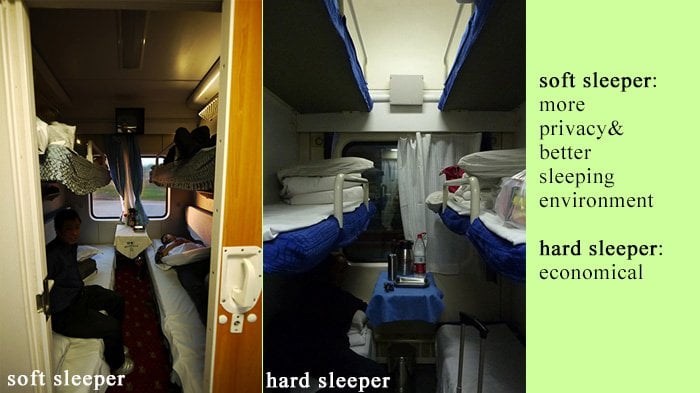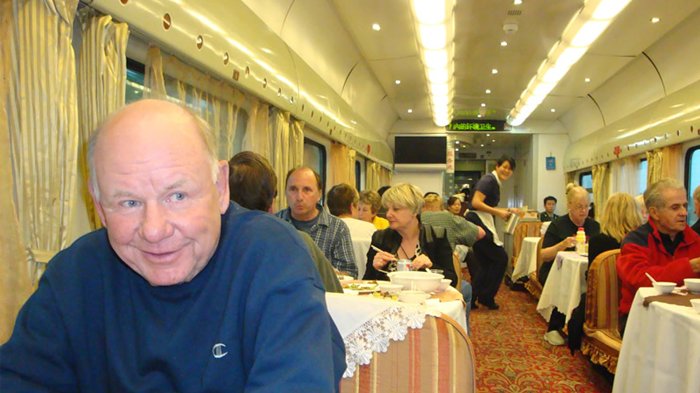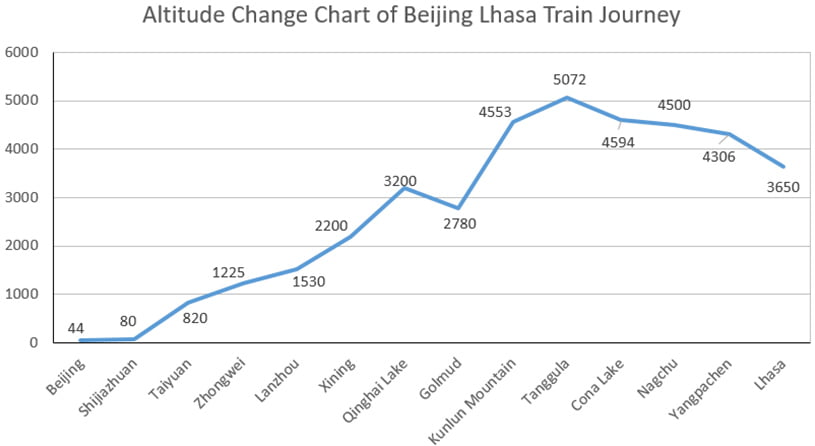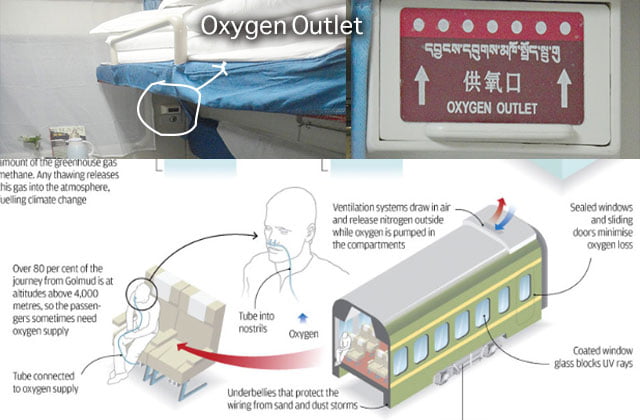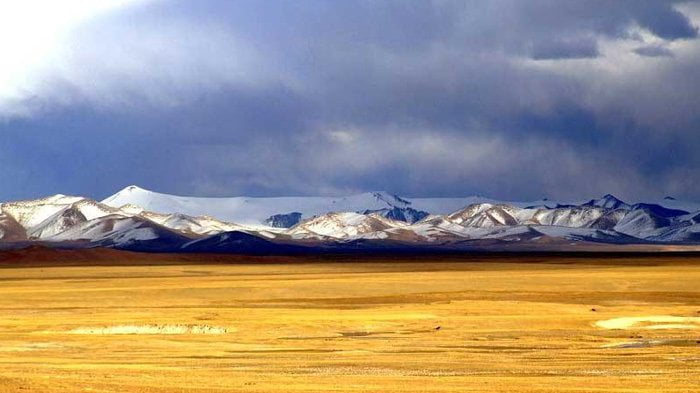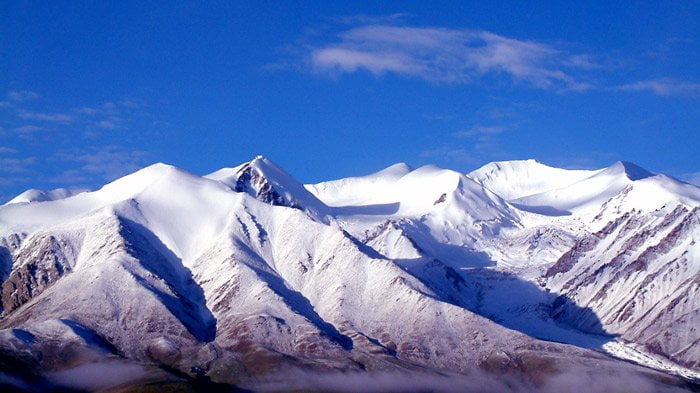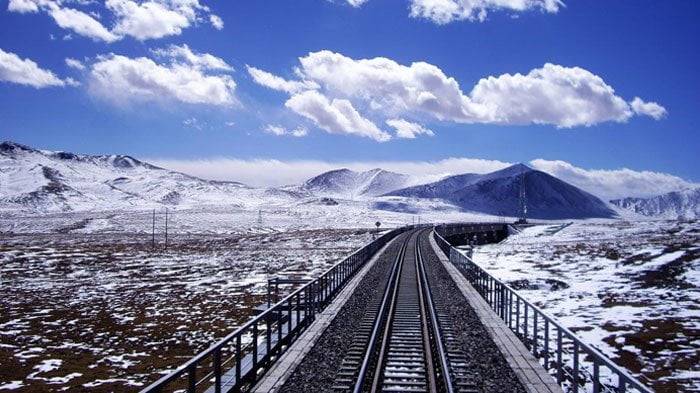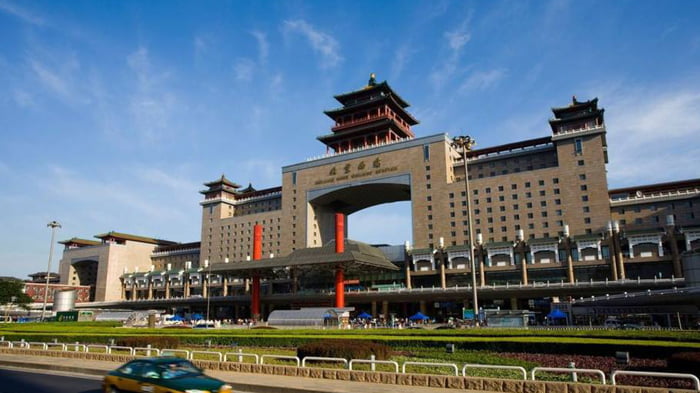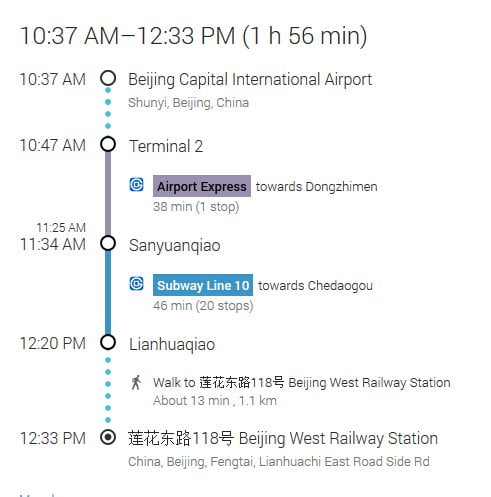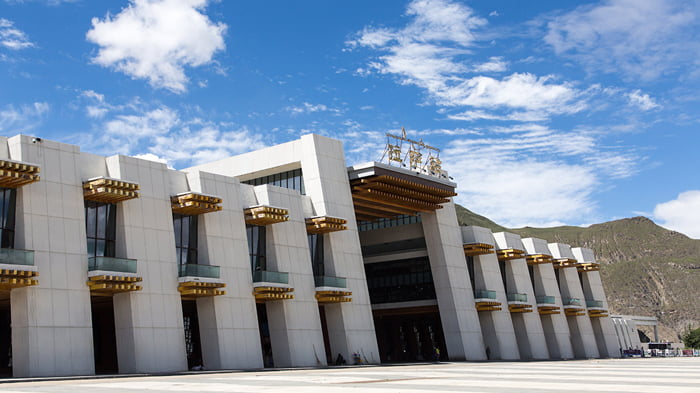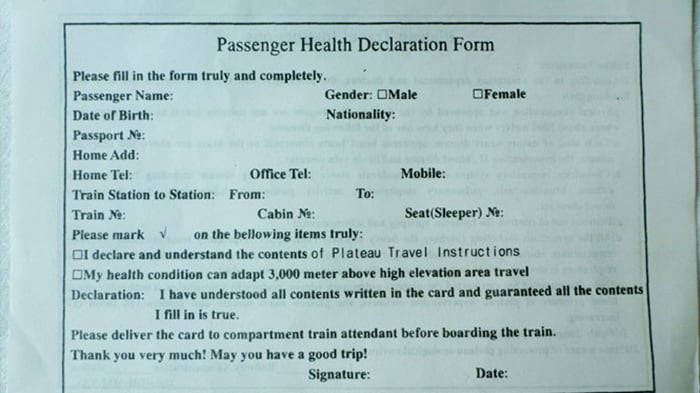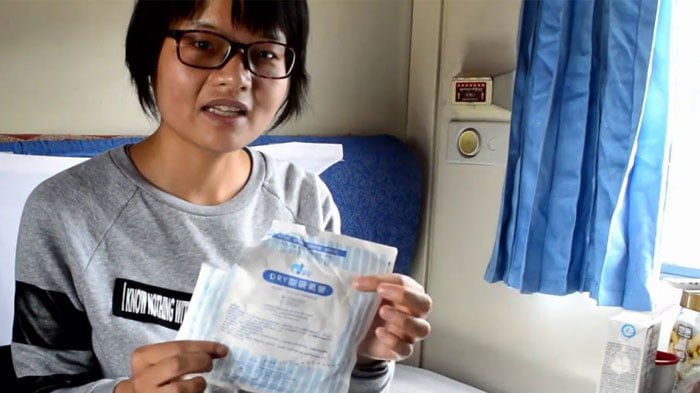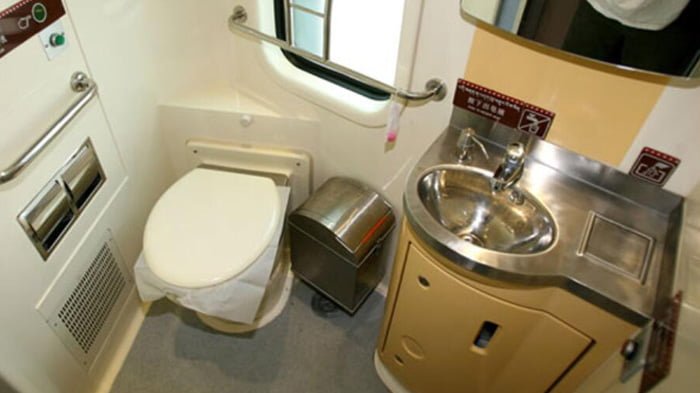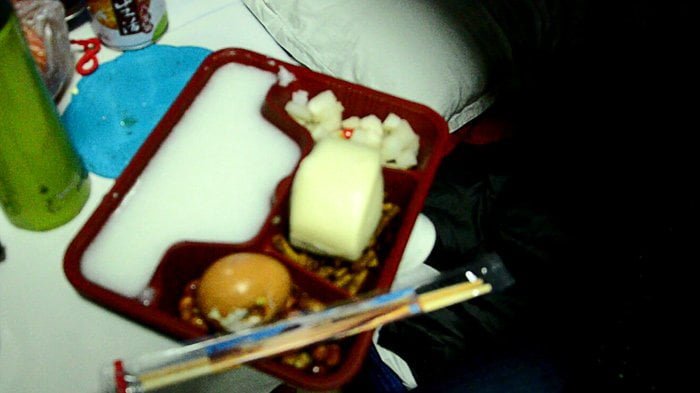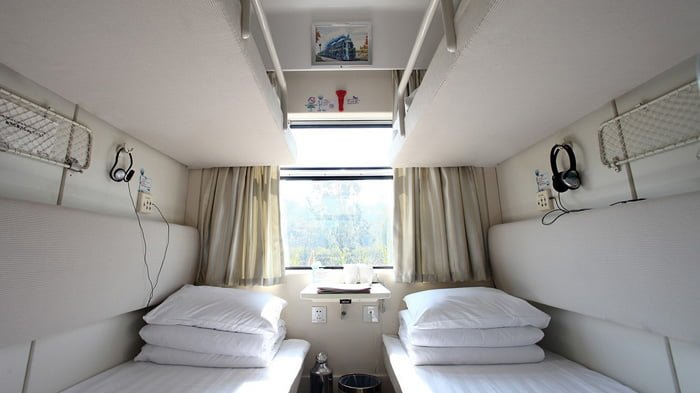Beijing is considered as the best place to begin Tibet Journey because Beijing enjoys easy transportation and China’s classical historical attractions. Known as the capital and one of the most vibrant cosmopolitans of China, Beijing is often the first option for foreign travellers to access China. Beijing Capital International Airport, being the second busiest airport in the world, has an annual throughput of over 90 million passengers and it can literally receive travellers from any part of the globe and vice versa.
Foreign tourists may choose to land in Beijing and tour some must-see attractions such as Forbidden City, Summer Palace, Great Wall, Tiananmen Square, etc en route to Tibet by Qinghai-Tibet railway. Besides, some of tourists can continue their journey to Nepal via Tibet. In fact, Beijing-Tibet-Nepal is one of the most popular tourism routes for travelers to travel in Asia.
Should I Book the Soft Sleeper or Hard Sleeper?
Soft Sleeper is More Suitable for Beijing to Lhasa Train Trip
Normally, there are two categories of accommodation available in Qinghai-Tibet Train, namely hard sleeper (second class ticket), soft sleeper(first class ticket).
A typical hard sleeper consists of 6 bunks (60cm wide and 180cm long) and there is no door for such compartment. Besides, the cramped space within each cabin leads to little privacy and the passengers moving in the aisle may interrupt one’s sleep. Yet, travellers can meet and make friends with different people and the ticket is much cheaper than soft sleeper.
Compared with hard sleeper, soft sleeper is highly recommended for a number of reasons. Firstly, long ride demands quality accommodation in the train. Cozy, quiet and private, soft sleeper promises tourists a relatively comfortable ride. In soft sleeper, there are only 4 bunks (75cm wide and 190cm long) and the room is much spacious than hard sleeper. In addition, the soft sleeper has a door that can be shut down. Thus, the personal property of tourists and a sound sleep can be better guaranteed at night.
Due to the high demands of the tickets, please contact us at least three months in advance to secure soft sleeper tickets for you.
What Can I Do If Soft Sleeper Tickets Get Sold Out?
As the hottest train route from the capital of China to Lhasa, the demand for Beijing-Lhasa train ticket is huge, especially during special travel rush seasons in China, such as 10 days before or after traditional Chinese Spring festival as well as summer and winter break for nationwide students. In this case, many may fail to book the tickets. To secure your travel, we suggest two viable alternative plans:
Option1: You can book the hard sleeper ticket of Beijing-Lhasa Train.
Option2: Instead of taking non-stop train from Beijing to Lhasa, you can fly from Beijing to Xining (or Lanzhou) and then get train ticket from Xining (or Lanzhou) to Lhasa.
Compared with sitting on the hard seat for over 40hrs, a highly recommended solution is to fly from Beijing to Xining and later take Xining-Lhasa train to Tibet. The alternative Beijing-Lhasa travel route makes sense in three aspects:
a. It can shorten tourists’ time on the train, because it only takes 21 hours from Xining to Lhasa. Tourists can save 20hours of long and tiring train journey, roughly half way of Beijing-Lhasa train route. And then you continue to head to Lhasa from Xining Railway Station, the essence and beginning of the Qinghai-Tibet Railway.
b. It can secure your train journey. There are many trains departing from Xining to Lhasa. As a result, it can ensure that visitors will be able to get on board successfully and can minimize the risk of failing to buy ticket from Beijing.
c. The trains bound to Lhasa from Xining normally start from late afternoon. It enables visitors to have longer time to enjoy the scenery from Golmud to Lhasa. Otherwise, if one departs from Beijing, he or she only has several hours to enjoy the scenery, because the time train arrives in Golmud is at night, at around 22:10.
d. Of course, you can choose to stay in Xining for a couple of days and travel in Xining. Xining is a well-known attraction in Tibetan region. Xining has many attractions: such as Kumbum Monastery, the birthplace of the founder of Buddhism-Lama Tsongkhapa (one of the six prestigious monasteries in Tibet) and Qinghai Lake, the largest inland lake. If you are interested in staying in Xining, you can consult our travel consultants.
Tips: If the original plan of buying non-stop train from Beijing is insisted, Tibet Vista cannot ensure 100% of buying the ticket because of the shortage of Beijing-Lhasa train tickets from Beijing West Railway Station. As a result, you may face changing date or degrading to hard sleeping berth, even fail to travel to Tibet. Therefore, the above alternative plan is highly recommended and workable during high season. Hopefully, you can accept our suggestion and choose a more secured way of travel.
How to Book and Get Tibet Train Tickets?
International travelers can’t enter in Tibet as backpackers and need the help of travel agency to apply for Tibet Travel Permit in advance. You do not need the permit to book the tickets but you do need it to collect the ticket and board the train.
1. How to Book Tibet Train Ticket?
Book train ticket with us ( highly recommended)
The booking of Beijing-Lhasa Train ticket is quite busy throughout the year, because Beijing – Lhasa Rail Line is a crucial passage that connects China central government with Tibet. On the one hand, a large number of tourists from all walks of life are travelling between these two places all year around and part of the tickets are also reserved for governmental affairs. On the other hand, the remaining tickets are booked by various travel agencies for organizing train tour to Tibet. That is why it is very difficult for individual tourists to book ticket on their own both on-line and off-line.
To individual tourists, the best solution is to contact a reliable travel agency and book the Beijing-Lhasa train ticket through their hands at least one month in advance.
Book at 12306.cn or buy ticket at train station
Neither method is convenient for international travelers. The 12306.cn has no English version and the online payment is limited to a bank account in mainland China. The staff at the train station can’t speak English. For popular routes such as Chengdu to Lhasa train, during the peak season and even the off season of Tibet tourism, it is difficult for foreign tourists to book train tickets because they get sold out very quickly.
About ticket price:
The ticket prices above are the net price. In reality, since the demand for Tibet train ticket far exceeds the supply, to successfully book the train ticket for you, an additional service fee is involved. However, we will manage to secure the ticket and ensure you a seamless Tibet train journey.
2.How to Get the Tibet Train Ticket?
In China, you need the paper train tickets to get into your train. If you book train tickets with us, you have two ways to get your paper tickets:
1. We deliver the paper tickets to your hotel or address in China (Recommended)
2. Collect them at the railway station
If you choose the delivery service, it is advisable to inform us 4 business days before departure. If you choose to collect them at the railway station, make sure to bring the confirmation number of train tickets, your Tibet Travel Permit as well as your valid and original passport. The confirmation number will be sent to you along with related train information once the tickets are confirmed, present it and the mentioned documents to the staff behind ticket windows to get paper tickets for free.
Beijing West Railway Station operates 24/7, but usually there are only a few ticket windows available after 11 p.m. Considering the long queues in front of the ticket window and the language barrier, it is advisable to arrive at the train station at least 2 hours before departure if you collect tickets on the same day.
3. How to Read the Train Ticket
Here are some useful phrases you may need to read Z21 Beiing to Lhasa Train ticket:
北京西站:Beijing West Railway Station
拉萨站: Lhasa Railway Station
xx年xx月xx日: xx Year xx Month xx Date
xx车xx号: xx Carriage xx Berth
上/ 中/ 下铺:Upper/ Middle/ Lower Berth
How to Board the Train?
Below are the steps to board a train in China:
Step1: Fill in the Health History Form
Before boarding the train, tourists are expected to fill out an health history form. If one has illness such as hypertension, stroke, chronic respiratory problem, and other cardiovascular disease, he or she shall no board the train for one’s health concern.
Step2: Pass Security Check
After your arriving at the right railway station, line up for the security check to enter into waiting hall: present your passport, Tibet Travel Permit and train ticket to the staff, put all your luggage such backpacks, carry-on bags on the security scanner conveyor belt, and walk through a detector gate and wait for staff to use a scanner on you to check forbidden articles.
Notice:
1. Tibet Travel Permit as well as your ticket need to be checked when you check in. Photo copy of the permit is acceptable in Beijing west railway station, while original one is required in Xi’an. Normally, we’ll get your permit some days before you board the train for Lhasa and deliver it to your hotel.
2. Tourists should put your luggage to the X-Ray scanner and things like gun, poison, explosive, and chemical substance, etc are strictly forbidden. Just follow the instruction of staff of railway station.
Step3: Find the Waiting Room
Once enter into the waiting hall of Beijing West Railway Station, you can find an LED screen showing Train Number (车次), Terminal (终到站), Departing Time (开点) and Waiting Room (候车室). Get your waiting room information and wait for check-in there. Train number Z21 is well marked in the correct waiting room.
Step4: Board the Train
Usually check-in starts 15-30 minutes before departure and barriers close 5 minutes before departure. After check-in, you can find Led screen hang on the way to the train telling your platform (站台) and direction of your carriage (车厢). Follow the instruction and the staff waiting at the carriage gate will check your ticket again to make sure you board the right carriage of the right train.
Step5: Find Your Berth
After getting on the train, you can find your berth according to your ticket. Put your baggage on the rack overhead or under the lower berth. Your sleeper ticket will be exchanged for a plastic berth card by staff shortly after boarding. Staff will return your ticket and get back the berth card about half an hour before arriving at your destination.
FAQs:
Q1. Is it necessary to carry Tibet Travel Permit all the time?
Make sure you have your passport, Tibet Travel Permit and ticket with you as you could be checked many times during the long journey. It is also advisable to have many copies of Tibet Travel Permit.
Q2. Is it possible to swap ticket with other people to stay with friends or family in the same cabin?
Yes. It is acceptable. You may ask conductor to swap tickets with other passengers to stay with your family or friends. Do remember your cabin and seat No.
Q3. Is It Safe on the Tibet Train?
Having a ride on Qinghai-Tibet train is relatively safe as each compartment is independent and its door will automatically be closed at night. One is forbidden to enter the compartment without ticket. Of course, nowhere is safer than the compartments of soft sleeper. The cabin of soft sleeper can accommodate 4 travellers and there is a door to shut, which is the perfect choice for a family. Besides, the surveillance cameras and 24-hours police patrol make it even safer on the train.
Life Onboard
Having a ride on Qinghai-Tibet train like Beijing-Lhasa route is definitely the experience of a lifetime. Besides, the long distance and pressurized train tailor-made for acclimatization of extreme altitude make the ride different from other train journey. Following tips are suggested for tourists to better enjoy the life on Beijing-Lhasa train.
1. Food and Drinks
Before the departure from Beijing West Railway Station, do bring enough food. You may bring some instant noodles, snacks and fruits to eat or simply as a way to pass the time as the long ride begins. Sharing snack with roommates is the easiest way to break the silence.
Dozens of tourists are having dinner in the dinning car. Tourists can order some traditional Chinese home-made dishes.
You can get 3 meals and drinks from the dining carriage located in the middle of the train. Usually only Chinese food such as noodles, dishes and soups is available and it costs about 20 CNY/meal and accepts cash payment, Wechat payment and Alipay. Yet, the menu may not be in English and the waiter or waitress may not speak English. So, bringing an English-Chinese phrase book could be a big help in some cases.
The trolleys loaded with food are served in each compartment sporadically and tourists can buy from the staff of train. Besides, tourists can get free boiled water from hot water dispenser near the sinks.
2. Facilities on the Train
Toilets: The soft sleeper carriage has one western-style toilet and one squat style toilet, while hard sleeper carriage only has two squat style toilets. Toilets are located at the end of each carriage, adjacent to the washbasin, dustbin and hot water dispenser. The toilets will be locked when the train stops. Avoid to use them when the train is about to stop for arriving at a station. The red sign on the toilet door means the toilet is occupied while the green sign means not occupied. Next small but important thing is to have enough tissue or toilet paper. Because it is used fast and one won’t find any replacement if it runs out.
Washbasin: Usually only cold water is available. Tourists need to bring their own towel, wet paper tissue and toilet articles.
Dustbin: There is a big dustbin at the end of the carriage. And you can find small dustbin in each compartment and metal plate on the table along the aisle. A cleaner will sweep the floor and collect luggage from the compartment from time to time. All the waste will be disposed by train staff when arrive at stops along the way.
Hot water dispenser: There are free boiled water all the time. Bring your own water flask and get water when the light on the dispenser turns green.
FAQs:
Q1. Where to recharge your mobile phones and electronic devices?
The power plug for chargers are located in the corridors OR under your table in the cabin with the 4 soft sleepers (in between the 2 lower bunks).
Q2. Can tourists have shower in the train?
Unfortunately, there is no shower room in the train. Do bring some wet wipes in stores and a small towel. And small but equally important thing is to bring enough toilet/tissue paper.
3. Altitude Change of Beijing to Lhasa Train
The slight altitude change from Beijing (44 meters above sea level) to Xining (2,275m) in the first 17 hours of the trip does not cause discomfort for passengers.
After around 7 hours from Xining, the altitude increases to 2829 meters when arriving at Goldmud at 22:10. It is from Goldmud Railway Station that the altitude increases sharply and the oxygen supply is turned on.
From Golmud, the altitude ascends more than 1,000 meters in less than 100 kilometers, causing altitude sickness for some passengers. When arriving at the world’s highest railway pass, the Tanggula Pass (5,072m) around 6 o’clock in the morning, most tourists will suffer from altitude sickness. Then, the altitude drops slowly as you travel south through Nagqu and finally reaches 3,650 meters in Lhasa.
4. Altitude Sickness and Oxygen Supply
Sometimes called “mountain sickness”, altitude sickness is a group of symptoms that can strike if you walk or climb to a higher altitude too quickly. Characterized by symptoms such as headache, dizziness, fatigue, nausea, altitude sickness is the biggest concern for traveling to Tibet.
This is no need to be panic about altitude sickness. To better adapt to high altitude, the Beijing-Lhasa train is tightly sealed and pressurized like an airplane. Therefore, smoking is not allowed. There are two sets of oxygen supply on the train: the dispersion-mode oxygen supply system operated by the train staff and the distribution-mode oxygen supply that can be connected to individual passenger through an independent port via a disposable pipe distributed by train staff. You can find the oxygen supply port in your compartment and along the aisle of each carriage.
As the train ascends to Golmud, the oxygen is automatically pumped into the train and tourists can also manually use the oxygen outlet to minimize altitude sickness symptoms such as headache, dizziness, fatigue, nausea, etc. It is advisable to bring altitude sickness medicines to ease the discomfort.
You can drink lots of water, eat light food and take a good rest to prevent high altitude sickness. It is advisable to consult the doctor for altitude sickness medicines weeks prior to the trip.
FAQs:
Q1. How to Get Help on the Train?
Some of the staff on the train speak English and they are easy-approaching and hospitable to foreign tourists. If one runs into any trouble, you may ask the head of conductor for help. Most of the passengers may have symptoms of altitude sickness (such as headache, fatigue, difficult sleeping, lack of appetite, etc.) as the train reaches Qinghai-Tibet plateau. Now, you may switch on the oxygen outlet to inhale oxygen to ease the discomfort. If the symptom gets worse, you may find the conductor for help and the doctor on the train will come and give you timely treatment.
Q2. How can we minimize the effect of altitude sickness?
The effect of altitude sickness on passengers varies. Yet, to minimize or ease the impact of altitude sickness, one may prepare some altitude sickness tablets before boarding the train and take some when the train climbs to plateau. There is no need to worry too much the altitude sickness, the train is built with oxygen supply system which is easy to use.
Q3. Is smoking allowed in the cabin?
Smoking is strictly forbidden in the train as the train is tightly sealed and pressurized and oxygen is pumped into the carriage when the train ascends to extreme altitude.It would be devastating if the train caught fire.
5. Views along Beijing-Tibet Railway
Just like the road trip by car, one could enjoy the scenery on both sides of the road. The stunning scenery along the Beijing-Lhasa railway line will never let you down. As the train passes Xining and enters Golmud region, the breathtaking view appears one after another. Be sure to capture the memorable experience with your camera. Major attractions are Qarhan Salt Lake, Yuzhu Peak, Kekexili Nature Reserve, Tuotuo He River, Tangula pass, Tsonag Lake, Qiangtang prairie, Namtso, etc.
Xining to Delingha:
Delingha to Golmud:
Golmud to Nagchu:
Nagqu to Lhasa:
How to Get to the Train Stations?
Beijing West Railway Station
Though there are 5 railway stations in Beijing, Beijing-Lhasa Train starts from Beijing West Railway Station. Tourists can choose a route to the railway station that suits you best.
Address: No. 118 of East Lianhuachi Road, Fengtai District, Beijing
Phone: 86-010-51824233
Ticket booking hotline: 12306
Distance from airport: appro. 46km
Bus to there: No. 3, No. 9, No. 21, No. 40, No. 50, etc.
From Downtown to Beijing West Railway Station
Beijing West Railway Station is about 9km from Tian’anmen Square. Like many other cosmopolitans around the world, Beijing has one of the most sophisticated subway systems that allow travelers to get to any major scenic spots and railway stations with ease.
Taxi: The taxi fee is calculated by distance, and the price starts by CYN 13.00
Metro: Line 7 or Line 9
Line 7: Beijing West Railway Station is the terminal of Line 7.
Line 9: Beijing West Railway Station is between subway stations Military Museum and Liuliqiao East.
From Beijing Capital International Airport to Beijing West Railway Station
Beijing Capital International Airport (PEK), being the second busiest airport in the world, has an annual throughput of over 90 million passengers in 2015 and it can literally receive travelers from any part of the globe and vice versa. Beijing Capital International Airport is around 46 kilometers from Beijing West Railway Station, besides taking a taxi, you can go there by metro and airport shuttle.
Airport Shuttle Bus: Beijing West Railway Station Line
Get on the shuttle at Terminal 3 of Beijing Capital International Airport, and get off at the station of South Square of Beijing West Railway Station. The ride takes around 2 hours and costs CNY 30/ person.
Metro Plan 1: Airport Express -> Line 2 -> Line 4 -> Line 9
Take Airport Express at Terminal 3 of the airport and get off at Dongzhimen Station => Transfer to Line 2 and get off at Xizhimen Station => Transfer to Line 4 at Xizhimen Station and get off at National Library Station => Transfer to Line 9 and get off at Beijing West Railway Station. The whole ride takes around 1.5 hours.
Metro Plan B: Airport Express -> Line 2 -> Line 10
Lhasa Railway Station
Lhasa Railway Station is the terminal of the Qinghai-Tibet Railway and serves as the central hub and biggest train station in Tibet for its huge transport capacity. Situated in Liuwu New Area of southwest Lhasa at an altitude of 3,641 meters, it is only 8 kilometers to downtown Lhasa, 20 kilometers to southwest of the Potala Palace.
When you arrive in Lhasa by train, our guide will greet you and bring you to start your once-in-a-lifetime trip to explore the mysterious Tibet – the roof of the world.
If you are planing your trip to Lhasa from Beijing by train or have any question about the traveling to Tibet by train, please feel free to contact us for consultation. We are ready to help you out.

